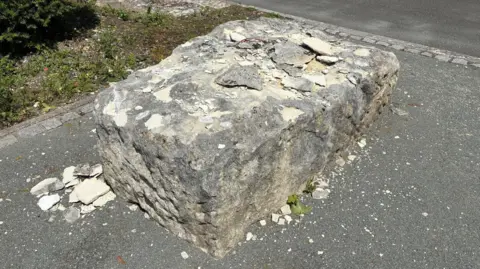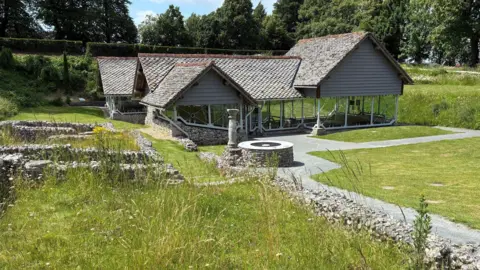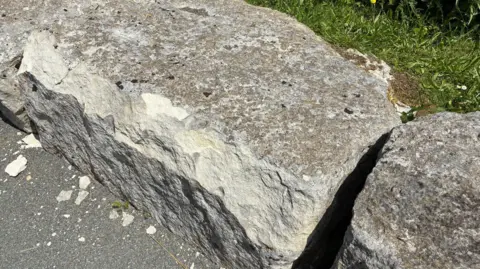Roman house rock damage 'not vandalism', says council
 BBC
BBCDamaged stones that lead down to a historic Roman building were not vandalised, an authority has said.
The rocks lie directly behind County Hall in Dorchester, Dorset, on a path leading down to the Roman Town House.
One large boulder at the start of the path is badly damaged on its top and sides, with large fragments of loose rock, while at least four other stones also show signs of damage as the path descends, with sizeable chips missing.
A Dorset Council spokesperson said it is believed the damage is all down to the weather and natural forces.
According to County Hall, it has been caused by spalling - a natural freeze-expand process where moisture freezing inside cracks in rock expands causing large forces which split shards of stone, or spall, off the outer surface.

The town house was first discovered in the 1930s, when the then Dorset County Council bought Colliton Park to build a new County Hall.
The site was excavated and the remains of at least eight buildings dating back to the Roman period were identified.

You can follow BBC Dorset on Facebook, X (Twitter), or Instagram.
